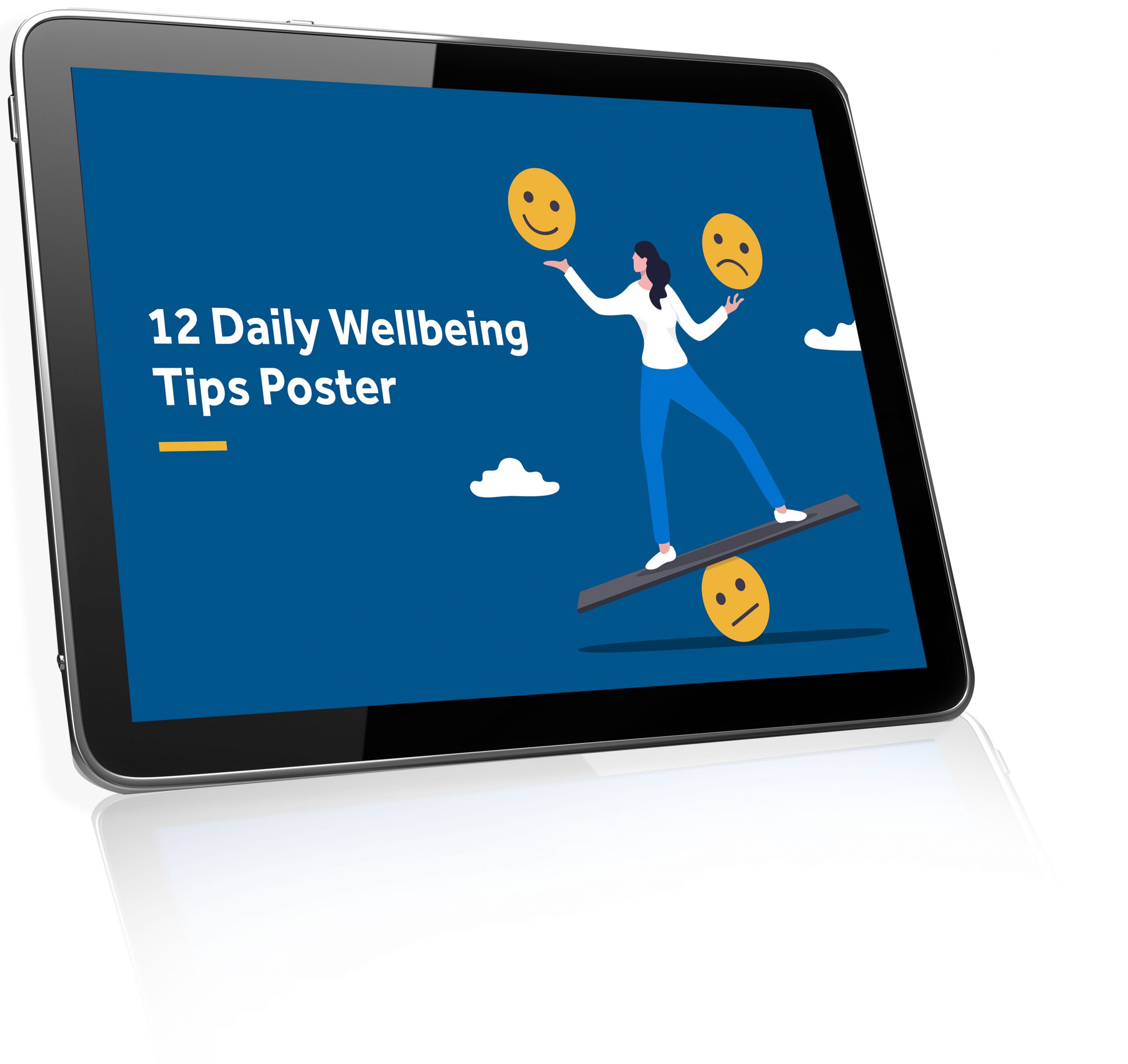
Mental health at work is coming more sharply into focus, as employers understand more acutely the stressors many of their workers face — and how those stressors ultimately affect their company as a whole. And while many employers have dealt with employees in a piecemeal fashion, the pandemic illustrated the necessity for an organisation-wide mental health strategy.
Mental health concerns or mental health problems are not new, they have just been ignored previously. It is the shifting dynamic of the workplace and the rising need for a safe and healthy workplace that is bringing this issue to the forefront. To specifically create an environment where people feel included, supported, and heard you need to devise a mental health strategy.
Workplace mental health
Employers have a duty of care to employees. This means evidently supporting employees and creating a safe working environment for them. Beyond the legal obligation, employees struggling with multiple stressors or mental health problems are more likely to be less productive, which can hurt overall morale and your bottom line. If your workplace is a positive and wellbeing focused workplace, it can also act as a potential employee engagement tool.
Prioritising workplace mental health and wellbeing needs to be a daily focus for employers, particularly for small business owners. Recent events have highlighted the varied mental health conditions affecting staff and workers.
In a short span, many employees have faced issues such as:
Struggling with the social isolation accompanying remote work
Facing increased childcare responsibilities
Grieving the loss of loved ones
Wrestling with illness
Dealing with financial stresses
Coping with broad anxieties about the future
Why do you need a mental health strategy?
A mental health strategy is a plan that is an inclusive document and resource to build a safe and healthy workplace. Having a mental health strategy can support the mental wellbeing of your staff and workers. Good mental health strategies will also include coaching and resources for supervisors or business owners to tackle mental health at work and identify people struggling with mental illness.
So how can you develop an effective mental health strategy?

Did you know that there is a National Mental Health Month?
It is celebrated each year in October and it is an important time for the Australian community to come together and raise awareness for mental health.
Start with your leadership
It’s critically important that you discuss with and gain commitments from your leadership team first before you do anything else. One of the quickest ways to torpedo your mental health program is for managers and departments not to provide the support you’ve promised. Or worse yet — for a manager to ridicule and shame those seeking help. Instead, you must not only make mental health a priority for your managers; you must make sure that your managers themselves are not engaging in behaviours that could harm employee mental health.
Heard those rumours that one of your managers yells at their staffers so much that some of them leave work crying? These are sort of issues you should address immediately. Identify a small group of managers along with a cross-section of employees from different departments to form a working committee, who can lead this work internally. Not only can you not do all the necessary work yourself, but you need to obtain buy-in from all levels of the organisation. Your leadership should believe wholeheartedly in promoting good mental health at work.
Build trust with your staff
A single employee sharing a story with their co-workers of how one of your managers was not receptive or hostile when they reached out can be enough to destroy the faith and trust of your employees in your strategy. To be effective, you’ll need employees to feel comfortable that your effort is genuine and thoughtful, and that starts with a process that heavily incorporates their feedback. When you launch your program, non-supervisory employees who participated directly in its design may be among your biggest internal champions of the program and help encourage struggling employees to take advantage of it.
Identify what your problems are and assess your needs
There’s no one-size-fits all mental health strategy for business. Instead, you need to develop one that is grounded in your unique needs.
To identify your needs, start by reviewing existing employee wellness and other relevant strategies to see what you already have in place. Perhaps there is a program you started years ago which no one uses. Or maybe you have some online training modules of which employees are unaware. Before you begin to design an entirely new program, you should see if there are existing strategies and resources which could be useful if you refined and expanded them.
Next, you should take a look at pertinent HR data, such as formal employee complaints, disciplinary records, and exit interviews. This information can give you some real insight into employee needs, as well as potential problem areas that may require remediation.
Also, take a look at reviews left by former employees on employee review sites, such as JobAdvisor, to better understand if there are elements of your organisational culture that may support or undermine employee mental health.
Finally, you should obtain direct feedback from your employees about their mental health needs. Consider the use of anonymous surveys so that employees can feel comfortable expressing how they truly feel and multiple internal focus groups of employees. It’s often best to find an outside facilitator to gather this kind of feedback, as facilitation by managers or HR staff may make employees hesitant to be honest about their needs.

World Mental Health Day
10th October is World Mental Health Day. To support business owners and employees and focus on mental wellbeing, we have created a poster offering daily wellbeing tips.
Design Your Program
Once you’ve identified your organisational needs, you should list them in order of importance and impact. Those which affect the broadest number of employees, have the most acute impact on employee well-being, and have the most measurable effect on organisational metrics should be ranked highest. Review this list with your internal working committee and condense the list to the three to five most pressing and actionable items. Develop a list of goals you want your program to achieve that addresses these goals and set a measurable timeframe to assess success.
When you’ve solidified your goals, work with your working committee and HR department to develop an action plan to achieve each of these goals. Your action plan should include elements that promote positive mental health steps, safeguard employees from harm in the workplace, support those who request help, and outreach to those employees identified as struggling. Include short-term and long-term goals and action steps. Your short-term goals should address all particularly acute problems over a defined period, while your long-term strategy should involve the establishment of ongoing practices and resources that benefit your employees.
Your action plan must also be integrated with your business and workplace. As you design it, take a look at every facet of your operations and see if there are opportunities to build links with your mental health program. For example, if the staff of one department reported that a source of stress was job security because they were isolated off from the rest of your organisation, find ways to fold them into broader organisational activities. Also, make sure all incoming employees are thoroughly trained on your business’ mental health programs and staff/managerial expectations regarding employee wellness.
Lastly, incorporate firm assessment measures to measure the successes (and problem areas of your program). These measures should be performed at regular intervals consistently. Use the data to refine your mental health program over time to ensure it continues to meet the ever-evolving needs of your workforce.
Suggestions
Below are some suggestions for mental health strategies you can try to implement:
Anonymous employee support hotline: where employees can call at anytime to discuss work issues and stresses or non-work-related issues
Mental health workshops with a third party host: to go over stress coping techniques and awareness
Ensuring employees know and are comfortable taking personal leave for mental health days
Providing employees with an additional day off as a mental health day that they can take whenever they want
Training for managers to understand the signs of mental health struggles or stress and how to have those conversations
Mental health strategies
Mental health strategies are obviously not a magical solution to supporting mental illness or mental health at work. Creating a culture that reduces stigma around mental illness and building a mentally healthy workplace generally requires time and efforts. The goal for any mental health plan or strategy should remain increasing awareness about mental illness in the workplace, reducing discrimination to those suffering from mental health problems, and offering resources to anyone at the workplace.
How can Employsure help you?
Employsure has worked with 30,000 business owners across Australia and New Zealand. We understand the importance of workplace relations and work health and safety. Call our 24/7 Advice Line today to get all your questions answered.

Need Workplace Policy Advice?
Employsure can help you with your WHS and Workplace Relations. Call now for free, initial advice
